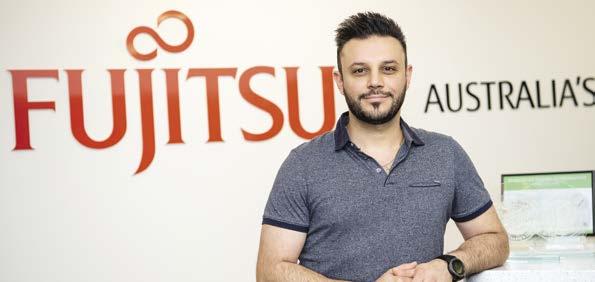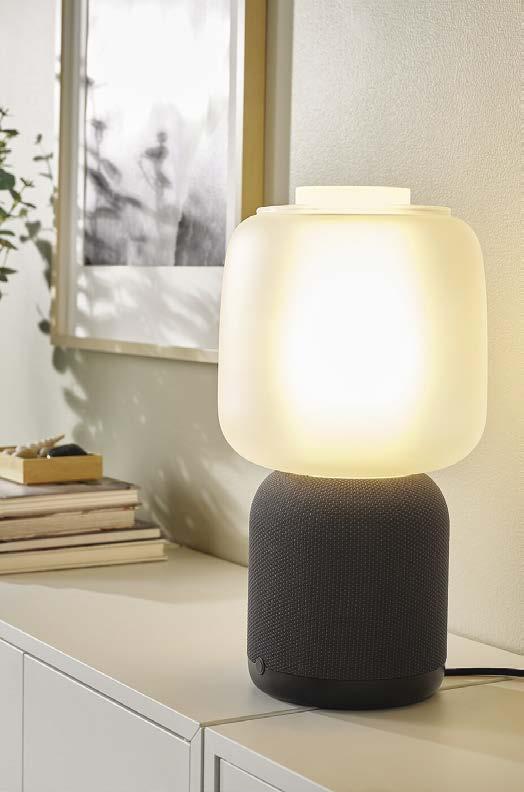
10 minute read
HVAC&R News regulars
by AIRAH
“No one has successfully combined HVAC and building performance before,” he says. “We’ve gradually peeled the onion from figuring out a replicable process for the toughest projects all the way down to a free quote process that fits with the ethos of HVAC 2.0 and keeps contractors out of trouble.
“We’ve had to constantly look for patterns and adjust to be able to find this new path. It’s extremely narrow, so it has been difficult to find and can be difficult to stay on, hence the tight process we’ve developed.”
Advertisement
A QUESTION OF BALANCE
Balancing a home starts with an understanding of how a building works, then good diagnosis, planning, careful execution and, finally, testing to ensure it all functions properly, Adams discovered.
“When uncomfortable and/or unhealthy homes are out of balance, HVAC alone often isn’t enough to solve those problems,” he explains. “This is where HVAC 2.0 comes into its own, providing a process to triage homes into the simple and the difficult problems with separate processes for different complications.”
Importantly for contractors Adams says, the system also leads to substantial increases in sales, running 60–70 per cent closing ratios within a month and 80–90 per cent within a year. These are typical, not atypical numbers, he says.
“Our network is seeing a 50–120 per cent increases in sales with the same volume of leads, in addition to large increases in closing ratios.
“Perhaps most importantly, the system helps contractors ‘responsibly avoid responsibility’ by offering options to clients and apprising them of both risks and costs, then letting them decide,” he adds.
“This avoids a lot of messy call-backs if clients choose a cheaper option only to find out it doesn’t deliver the results they wanted. We’re seeing warranty reserve expenditures get slashed to almost nothing.”
Airtightness is major factor in how a building – and its HVAC system – performs. According to Adams, blower doors are arguably the most important tool for making a home more comfortable and efficient.
BEGINNING AT THE BEGINNING
It was over a decade ago that Adams and his partners set out to be able to help people achieve a truly comfortable and healthy home.
“We started out doing advanced retrofits combining insulation and HVAC and built a process for diagnosing, selling, and executing those jobs,” he says. “But then we realised that only 1–3 per cent of homes are likely to get those advanced projects, so we set out to find a better path.
“We were surprised that most homes aren’t as screwed up as we thought and also that the right HVAC can substantially reduce or even solve most comfort and health issues in homes.
“Until now [the business has] attracted super geeks who really like to solve problems and are technically excellent in their work; however, we found that a sales process was also needed from phone call/ email all the way through the advanced projects. So we’re designing a process for free quotes that allows all replacement leads to go through so more contractors will be able to benefit from HVAC 2.0.”
SO, WHAT’S THE SYSTEM?
HVAC 2.0 is a comprehensive planning process, designed by Adams and his partners, that glues the interconnected systems together.
“You can fix anything with that process,” he says.
He maintains that that if a house is properly sealed, has adequate insulation and the right HVAC system installed it will provide comfort, health and safety, durability, and efficiency.
In his view, these are the four basic principles of home performance:
• A consistently even temperature (comfort)
• Eliminating possibilities of high humidity and the leaking of carbon monoxide, particulate matter and nitrous oxides from heaters, stoves, and basements (health and safety)
• Managing moisture issues to prevent mould, termite infestation and asthma (durability)
• Good building design (efficiency).
In other words, good building design is about adequately controlling the air, heat and moisture flow in a home.
“When you do this, magic happens,” says Adams. “Airflow is the most important because heat and moisture often travel in air, so air sealing is essential to make insulation work properly.”
This is when the size of an existing HVAC system comes into play. Once a home is properly sealed and insulated, Adams says, an existing system can often then be too large for the home, and uneconomical.
GET PHYSICAL!
Keen to learn more about building physics? Check out AIRAH’s Building Physics Forum: www.airah.org.au/buildingphysics
EFFICIENT AND HEALTHY
This two-storey house in Hinckley, Ohio, is one of the case studies on the energysmartohio.com website.

He adds another five principles for creating comfortable, efficient homes:
• Air sealing
• More air sealing
• Keep air sealing
• Install appropriate insulation
• Install an HVAC system suited to the improved air sealing.
CAN HVAC 2.0 WORK IN AUSTRALIA?
Sean Maxwell, AM.AIRAH, Australia New Zealand Scheme Manager for the Air Tightness Testing and Measurement Association (ATTMA) says the HVAC 2.0 system is highly relatable in an Australian context.
“[Nate Adams’] priorities make so much sense,” says Maxwell. “Control the loads first. Concentrate on quality. Then you can be more confident in your HVAC sizing. The authors of a new Australian study hope their work will act as a catalyst for industry change as we move to net-zero-carbon housing. As well as providing in-depth technical information on moisture management and airtightness, it recommends how construction practices need to change to achieve highly energy-efficient, durable and healthy buildings.
An Australian Based Study On Airtightness and Moisture Management is published by Pro Clima, and authored by Jesse Clarke, M.AIRAH, and Lothar Moll, with input and review from international experts.
“The relationship between energy efficiency and health is not a trade-off,” Clarke says.
“When done correctly, a more airtight and well-insulated building is actually a healthier, more durable and more energy-efficient building. This is what the study is about – how to do it correctly.”
The study can be downloaded for free from proclima.com.au/pro-clima-australia-study/ ■
1300 324 919


• HIGH PERFORMANCE • LOW ENERGY CONSUMPTION • LOW NOISE EMISSIONS • EASE OF INSTALLATION & MAINTENANCE





























Thermal imaging is another vital tool when understanding the impact of insulation and sealing on heating and cooling.

“The reason the US and Europe have become champions for airtightness is that it’s one of the most cost-effective ways to save energy. Compared to investments in solar power, HVAC and high-performance windows are a winner, especially when you consider where Australia is starting.”
And the basic measures for airtightness?
“These include a water-resistive barrier (WRB) wrap, effective flashing, and better quality windows,” Maxwell says. “Sealing penetrations and HVAC components also helps. We’re not talking about crazy new things here. They’re basic measures to keep out rain, bugs, and humid air. They help keep a building dry and durable, and they make it more comfortable. What’s not to like?”
ATTMA are experts in Australia when it comes to airtightness testing (ATT), a basic way of assessing building enclosure integrity for air leakage.
Maxwell explains that this is mostly done with a blower door, which uses a fan to pressurise the building.
“By analysing the airflow through the fan over a range of pressures, you can establish a relationship and compare the result to a standard,” he says.
He adds that ATTMA’s testing is used around the world to enforce codes and standards because of its efficiency.
“The simple pass/fail certificate is easy to verify and reduces costs for everyone,” he says.
Maxwell supports the ideas behind the HVAC 2.0 concept.
“A comfortable home is one that is well-built,” he says. “No amount of HVAC is going to take a damp, leaky house and make it comfortable and healthy, at least not without using a great deal of energy. Controlling loads with air sealing, insulation, and attention to thermal bridges will make it more thermally efficient.
“Controlling humidity with simple and effective ventilation is critical but not difficult. Even a simple system like a low-flow continuous exhaust is a basic solution for most of Australia.”
HELPING THEM TO HELP THEMSELVES
Back in the US, this time in North Carolina, HVAC 2.0 member Reedie Ward saw his lead volume cut in half during the pandemic. This could have been disastrous for him as a contractor, Adams says, but thanks to HVAC 2.0, Ward didn’t see any drop in income because his closing ratio and average job increased significantly. “[Ward] now sells almost entirely top-of-the-line equipment with good margins. And the HVAC 2.0 network in general is seeing their work move from 80–90 per cent basic equipment to 80–90 per cent inverter/high-end equipment.”
Because part of the approach is to educate customers so that they can help themselves, Adams says the customers of HVAC 2.0 contractors are much happier and take great pride in being able to solve problems that others can’t.
“The biggest challenge has been figuring out how to teach the ‘guide’ mindset to contractors,” he says. “It’s natural for us as ‘the experts’ to play the hero, but it will get you in trouble if you are going to truly solve problems.”
By this, Adams means there usually exists a hero versus guide conundrum, where contractors feel they need to “rescue” clients and clients often want to be rescued. This puts contractors in what he calls the “hero” position. The other characters are the villain, the victim, and the guide.
It’s a concept he’s borrowed from Building a Story Brand by Don Miller and the Sandler Selling System. “The hero ends up with a ton of responsibility, often unfairly,” says Adams. “Clients often expect perfection and can extract promises of perfection from us even though they are making less than ideal decisions. We call that irresponsibly taking responsibility.
“If you aren’t getting paid to take responsibility and don’t have control over outcomes, do not take it.
“Don’t play the hero,” Adams advises. “Instead, play the guide and offer your clients solid education and multiple paths forward while apprising them of risks and costs, then let them make the decision. This way they own a great deal of the responsibility for outcomes and become partners in the projects rather than acting like the victim. We make clients the heroes in their own stories with HVAC 2.0.”
CHANGE YOUR MINDSET
Ultimately, Adams says, fixing a house the HVAC 2.0 way does not require a huge amount of building science understanding, but you do need a trained eye to look for problems, and a well-designed and executed solution.
“You don’t necessarily need a killer education in building science to get this,” he says. “We teach people as they need to know. We’re genuinely surprised at how many issues can be blunted/solved with HVAC alone, but you can only give guidance on how much will be solved if you know what the shell of a house is like.”
For contractors, it “requires fundamentally changing your mindset from being a hero to being a guide” he says. “Our solutions are not gimmicks, because we have the projects to prove it, but it’s not for the faint-hearted!” ■
CASE STUDIES
For in-depth case studies, check out the comprehensive Energy Smart Home Performance website: https://energysmartohio.com/case-studies/







